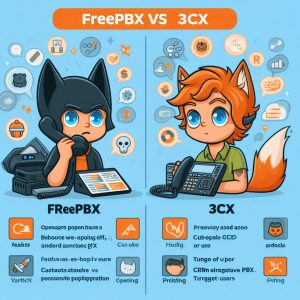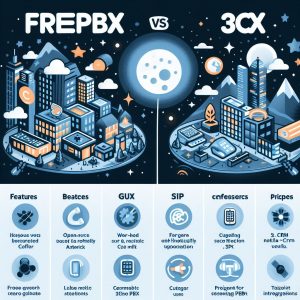Introduction
Avast and Sophos are two of the top names in the cybersecurity industry. Both companies offer robust antivirus and malware protection capabilities. However, they differ in their target markets and overall product offerings.
This article provides an in-depth comparison of Avast versus Sophos across five key aspects: security, privacy, user-friendliness, system performance, and pricing/value. Analyzing these factors can help determine the best antivirus solution based on individual user needs.
Features
Avast is likely better known among home users and offers a free basic version of its security software. It also provides a virtual private network (VPN) service. In contrast, Sophos focuses more on advanced cyber protections tailored for businesses, though it does offer home solutions.
When it comes to core security features, both Avast and Sophos integrate technologies like real-time scanning, malware detection engines, firewalls, and more. Independent lab tests confirm both solutions offer reliable threat detection rates.
However, some experts argue Sophos provides more robust protection capabilities for complex organizational networks compared to Avast. But for personal use, Avast satisfies malware defense needs for many home users, especially with its free option.

Performance
System performance is a key consideration when selecting antivirus software. You want real-time protection without dragging down device speed during everyday use.
Test results indicate Avast has less of a performance impact compared to Sophos. Avast consumes fewer computing resources while running background scans. It also has faster quick/full system scan speeds compared to Sophos based on industry benchmarks.
For example, during full scans Avast used around 2-3% CPU utilization compared to Sophos ranging from 7-15% CPU impact. So Avast gets the edge for overall performance and lower system drag.
User Interface
Avast and Sophos take different approaches when it comes to user interface, but both emphasize simplicity and ease of navigation.
The Avast interface features a clean left-hand menu for settings while the main dashboard focuses on security status. Sophos organizes tools and features using an upper ribbon menu instead. Custom skins allow changing up interfaces as well.
Overall, both Avast and Sophos earn positive marks for presenting security insights without complexity getting in the way. So ease of use is on par for both antivirus options.

Pricing
When it comes to pricing and value spent based on capabilities, Avast emerges as the better bargain antivirus software for individuals.
A multi-device Avast subscription runs under $100 yearly, but stacks up tools like antivirus, VPN, browser cleanup, password manager, and more. Sophos Home only covers a single Windows device for around $50 annually.
However, Sophos frequently offers free home-use trial periods for users wanting a risk-free test run. Avast lacks a trial version, instead relying on its limited but free antivirus plan to tempt users into premium upgrades.
For organizations, Sophos provides steep volume discounts unavailable from consumer-focused Avast. But regular users benefit more from Avast’s pricing model for multi-device coverage.
Conclusion
To conclude, Avast beats Sophos for home users based on malware protection, system performance, pricing, and interface usability. But Sophos remains unmatched for advanced security capabilities protecting complex business networks and infrastructures.
So regular computer users wanting straightforward, high-performing multi-platform antivirus protection find Avast the better bargain. Meanwhile, IT professionals invested in robust enterprise-grade security solutions can benefit more from Sophos capabilities.
Determine your individual computer security needs, preferred budget, and priority features when choosing between these two cybersecurity leaders. Weigh factors like security depth versus value for money spent before deciding on the right antivirus software for optimal protection.
Introduction
The debate between McAfee and Avast has been ongoing for years in the antivirus software industry. Both companies offer robust malware protection and a wide range of security features. McAfee is a veteran in the cybersecurity space, while Avast has made a name for itself as a leading free antivirus solution. This article provides an in-depth comparison of McAfee and Avast across key categories to help determine which antivirus solution best fits specific user needs.
Security and Privacy
When it comes to core malware protection, both McAfee and Avast offer reliable security with high detection rates. Independent lab tests consistently show above-average results for malware detection for both antivirus tools.
However, McAfee edges out Avast when it comes to privacy. McAfee has a no-logging policy for customer data and ensures all data collection is anonymized. On the other hand, Avast has faced controversy over selling user data to third parties, despite updating its privacy policy. Avast also had a data breach in 2019 that exposed user data. So for privacy-focused users, McAfee is likely the safer choice.

User-Friendliness and Support
McAfee and Avast are on par when it comes to ease of use and quality of customer support. Both antivirus solutions offer simple dashboards and well-designed interfaces for core security features. Installation and setup are straightforward as well.
The support content for both McAfee and Avast is extensive, with detailed help guides and FAQs. Response times for support tickets are timely, usually within 24 hours. So whether novice or expert computer users, McAfee and Avast both provide accessible security options.
System Performance
System performance is an important consideration for any antivirus software. You want reliable virus protection without slowing down your device.
Independent testing shows Avast generally has low system overheads during scans and everyday use. In contrast, some McAfee products showed higher than average system slowdowns in lab tests.
However, it’s worth noting that Avast has faced criticism over security lapses, including a breach affecting over 400 million users. So there is a tradeoff between performance and airtight security.

Pricing and Value
When it comes to pricing and value for money spent, McAfee is the clear winner. A single McAfee Total Protection license can cover all Windows, macOS, iOS and Android devices in a household for around $100 per year.
Comparable coverage with Avast would require several separate products, including its premium security suite and mobile security app subscriptions. The cost can quickly add up to over $180 per year for full cross-platform protection.
So for budget-focused consumers that want antivirus protection across multiple devices, McAfee provides better value.
Additional Features
McAfee also shines when it comes to additional security capabilities beyond core antivirus protection. McAfee Total Protection includes extras like password manager, VPN, firewall, parental controls, identity theft protection and more.
Meanwhile, Avast focuses more narrowly on core security like antivirus, anti-phishing and limited VPN functionality. Users need to upgrade to the maximum plan to access extras like basic password manager and limited online privacy features.
So for users that want an all-in-one security suite with minimal effort, McAfee is the way to go. Avast wins for users happy just protecting a single device from malware threats.
Malware Protection
Now for the core functionality that matters most in antivirus software: malware protection. Both McAfee and Avast leverage signatures, heuristics, emulation and machine learning to catch the latest malware threats.
However, independent tests consistently show McAfee at the cutting edge for malware detection rates. McAfee combines advanced heuristics, real-time behavioral monitoring, and near-instant cloud analytics updates to catch emerging threats. Detection rates often reach 99-100% in lab tests.
So for the very best malware detection alongside bonus features, McAfee is ahead of Avast. But Avast still provides above-average threat protection for those seeking a basic free antivirus solution.

Interface
In terms of interface and design, both companies have made efforts to modernize and simplify their antivirus softwares’ dashboards.
McAfee overhauled its interface in recent years, with color-coded threat scores and cleaner navigation. Avast also updated its interface with a brighter, flatter design focused on key security stats.
Most McAfee and Avast products feature status updates on the main dashboard, with drill-downs to access settings or initiate scans. So the interfaces are on par for being intuitive and visually appealing.
Conclusion
To conclude, McAfee wins out over Avast in several key antivirus categories like privacy, value, features, and leading malware protection. But Avast remains a compelling free option for basic antivirus capabilities with low system impact.
So McAfee Antivirus is the best choice for comprehensive, cross-platform protection with bonus features like VPN and password manager. But users happy with just essential antivirus protection may find Avast’s free plan meets their needs. Determine priorities like privacy level or budget constraints, and weigh importance of extra capabilities beyond antivirus to decide the best antivirus software for individual needs.
With cyberattacks constantly evolving, using layered security solutions is essential for defending endpoints and networks. Two cornerstones of cyber protection are antivirus software and firewalls. While both are vital, they serve distinct purposes. This guide will compare antivirus tools and firewalls, examine how they complement each other, and highlight key considerations for implementation.
What is a Firewall?
A firewall is a network security system that monitors and controls incoming and outgoing traffic based on a defined set of security rules. Firewalls act as a barrier between trusted internal networks and untrusted external networks like the internet.
They work by inspecting traffic against predetermined criteria to block or allow access. Corporate firewalls shield private networks while personal firewalls protect individual devices.
Types of Firewalls
Network firewalls – Appliance hardware installed at network perimeters with OS/software to inspect traffic across entire networks.
Host-based firewalls – Software installed on endpoints like computers that screens network activity on that device only.
Cloud firewalls – Firewall resources provisioned from cloud providers to protect infrastructure and applications in the cloud.
Firewall Advantages
- Shield entire networks or devices from untrusted access
- Allow granular control over inbound and outbound traffic
- Prevent unauthorized access to private networks and machines
- Detect and block malicious traffic based on protocols, IPs, domains etc.
- Essential boundary protection aligned to security policy
Firewall Limitations
- Cannot directly detect or remove malware already present internally
- Require expertise to properly configure rules and policies
- Not designed to identify deceptive or encrypted threats
- Hardware models can be expensive and complex to deploy

What is Antivirus Software?
Antivirus software is an application installed on individual computers, servers, or mobile devices that monitors activity for malicious code and protects against cyber threats. It serves as the last line of defense against malware reaching endpoints.
Signature-based detection and heuristic analysis identify threats like viruses, worms, spyware, ransomware, and trojans. Real-time scanning proactively blocks execution and quarantines detected malware.
How Antivirus Software Works
- Scans files, memory, boot records, downloads, attachments etc. against databases of malware signatures
- Uses heuristics including behaviors, code analysis, and machine learning to detect unknown threats
- Quarantines or removes detected malware to contain and remediate threats
- Provides real-time monitoring and scheduled scanning to find infections
- Alerts users of detections and may block risky actions like accessing infected sites
Antivirus Software Advantages
- Detects and blocks known and unknown malware on endpoints
- Identifies and quarantines infected files/applications
- Prevents malware from harming host computers and networks
- Provides visibility into threats targeting users and assets
- Can integrate with other endpoint protection like firewalls
Antivirus Software Limitations
- Cannot assess full traffic like a network firewall can
- Requires frequent signature updates to keep pace with new threats
- Performance impact during scans and overhead while running
- Malware can evade detection through deception and encryption
- Only focused on the local endpoint environment

Key Differences Between Antivirus and Firewall
| Category |
Antivirus |
Firewall |
| Type |
Software application |
Hardware appliance or software program |
| Scope |
Individual devices/endpoints |
Entire networks or systems |
| Approach |
Analyze files, memory, downloads etc. for malware |
Filter traffic based on protocols, ports, IP addresses |
| Focus |
Internal threat detection and response |
External threat prevention |
| Strength |
Identifying and remediating infections |
Defining and enforcing access rules |
| Limitations |
Limited view of networks/traffic |
Cannot remove infections directly |
While both are vital for protection, antivirus and firewalls serve distinct roles:
- Firewalls control traffic flows between networks while antivirus monitors endpoint activity
- Firewalls prevent unknown external threats while antivirus catches internal infections
- Firewalls filter traffic but cannot see encrypted content like antivirus can
- Antivirus requires signature updates while firewalls rely on preset rules/policies
- Firewalls provide boundary restrictions while antivirus gives visibility into impacted systems
Using Antivirus and Firewall Together
Antivirus and firewall should be used together for layered security:
- Firewalls block risky traffic, creating the first barrier of defense
- Any threats that penetrate the firewall are caught by antivirus programs on endpoints
- Antivirus can inform firewall rules by identifying attack sources
- Firewalls prevent external communication with infected machines during remediation
A firewall cannot stand in for antivirus, and antivirus cannot provide total network security. Using both solutions together provides breadth and depth to catch threats both outside and inside your environment.

Key Takeaways on Antivirus vs Firewalls
- Firewalls filter traffic while antivirus inspects files/activity for malware
- Firewalls provide boundary control while antivirus delivers internal threat visibility
- Firewalls block based on protocols while antivirus uses signatures and heuristics
- Both are essential — firewalls keeping threats out while antivirus removes infections internally
- Layered security requires leveraging firewalls and antivirus together for comprehensive protection
For robust cyber defense, firewalls and antivirus solutions should be deployed together to block and detect threats across networks and endpoints. Their combined strengths produce overlapped protection to catch malicious activity.
Surfshark entered the cybersecurity scene in 2018 as a VPN provider and has since expanded into antivirus software with Surfshark One. This review will examine how Surfshark Antivirus stacks up against competitors on malware protection, system performance impact, user experience, and value. We’ll compare it to leading antivirus products and provide a verdict on who should consider using Surfshark for securing devices.
Surfshark Antivirus Features and Protection
Here are some of the key capabilities of Surfshark Antivirus:
- Real-time scanning – Continuously monitors activity and blocks malware infiltration on Windows and macOS. Also provides webcam protection against peeping.
- Malware detection – Includes signatures for identifying known malicious files plus AI for detecting zero-day threats. Shows a threat map highlighting infection severity globally.
- Anti-ransomware – Stops unauthorized changes to files that may indicate ransomware encryption is underway.
- Manual scans – Allows on-demand full system scans or custom scans of specific files and folders.
- Quarantine – Isolates detected threats instead of outright deleting for recovery if needed.
- Updates – Automatic background signature updates ensure the latest protections.
While covering essentials, Surfshark lacks extras like a firewall, parental controls, password manager, or PC optimization tools. Protection is also limited to individual devices.

User Experience
Surfshark delivers streamlined usability:
- Interface – The dashboard uses a clean modern design with intuitive navigation and graphics. Scans are easily scheduled or initiated.
- Compatibility – Runs on Windows, MacOS, iOS, and Android. Cannot scan network drives or emails.
- Installation – Initial install and setup takes under 2 minutes. Sign-in uses existing Surfshark credentials.
- Scanning – Quick full scans take under 10 minutes on average. Shows real-time threat blocking notifications.
- Customization – Settings allow tweaking which files and folders to scan, exclusion rules, and cleanup options after threats removed.
The experience compares well against competitors, though advanced users may desire more scan configuration and threat analysis options.
Surfshark One Bundles Antivirus with VPN
In addition to the standalone antivirus application, Surfshark offers an integrated suite called Surfshark One which bundles:
- Antivirus for Windows and macOS
- Surfshark VPN covering unlimited devices
- Search tool removing trackers from web queries
- Alert service for breached accounts and passwords
Pricing starts at $2.49 monthly for the bundle, a $1 savings compared to purchasing components individually. Surfshark One provides an aggregated solution for privacy, security, and malware protection.

How Surfshark Antivirus Compares to Top Providers
Malware Protection – Scored highly in AV-Test evaluations, on par with Kaspersky and Bitdefender1. Real-world testing showed 99% malware blockage2.
Impact on System – Light footprint with minimal RAM usage around 250MB. Installs without driver software for less system alteration3.
Speed – Quick initial and recurring scans. Background protection causes minor 4-5% performance lag during active scans4.
User Interface – Clean, visually appealing dashboard requires little user training. Falls short of Avast’s sleeker experience5.
Price – Around $35 per year for one device. Comparable to pricing of mid-range products like Webroot but not as low as Windows Defender.

Summary and Verdict
The Pros
- Stellar at blocking malware and ransomware in testing
- Very user-friendly interface and setup
- Reasonably priced, especially as part of Surfshark One
The Cons
- Light on additional security tools and mobile support
- Lacks deep scan customization for experts
- Unproven long-term track record
Surfshark Antivirus provides robust core protection against malware and phishing for individual users. While not as full-featured as veteran solutions, its fresh approach and blending with VPN make it worth consideration, especially for existing Surfshark subscribers. For complete multi-device protection, a more established provider may better suit. But overall Surfshark Antivirus brings innovation to personal cyber protection.
Virtual private networks (VPNs) can provide Danish residents and visitors with heightened online privacy, access to restricted content, and security when browsing on public networks. This guide will examine the benefits of using a VPN in Denmark and provide recommendations on the top services to consider based on factors like server availability, speed, and ability to bypass censorship. We’ll also look at free VPN options for cost-conscious users.
Read on for an overview of how to choose the right VPN solution to meet your specific requirements as a user in Denmark.
Benefits of Using a VPN in Denmark
Deploying a VPN in Denmark offers a number of advantages:
Enhanced Privacy – VPNs hide your IP address and online activity from your internet service provider and the websites you visit for greater confidentiality.
Access Restricted Content – Many streaming platforms block content based on geographic IP location. A Danish VPN allows bypassing these restrictions.
Secure Public Browsing – Connecting to open Wi-Fi networks can pose risks. A VPN secures your connection while browsing in public places.
Bypass Censorship Abroad – When traveling outside Denmark, a VPN can unblock sites and services censored by repressive regimes.
Access Danish Content Anywhere – VPNs with Danish servers let expats view Danish news, streaming video, and other locally restricted content.
Choosing a high-quality VPN tailored for use in Denmark maximizes these benefits.

Best VPNs for Use in Denmark
Based on factors like server infrastructure, unblocking capabilities, and respect for Danish privacy laws, these providers stand out:
ExpressVPN
With 3,000+ global servers covering 94 countries, ExpressVPN offers users in Denmark excellent performance and broad connectivity. Features include:
- Lightning-fast speeds ideal for streaming HD video
- Suite of apps for Windows, MacOS, iOS, Android, and Linux
- AES 256-bit encryption and secure protocols
- No activity or connection logs
- Unblocks Netflix, Disney+ , BBC iPlayer, and other geo-restricted sites
With strong privacy policies and superb unblocking, ExpressVPN satisfies all the needs of VPN users in Denmark.
NordVPN
NordVPN hosts over 5,000 worldwide servers including multiple locations right in Denmark. The Danish servers provide:
- Quick connections for smooth HD streaming
- Low latency speeds for competitive online gaming
- Access to local Danish content while traveling abroad
Other NordVPN benefits include robust encryption, zero logging policies, and availability across all major platforms. For an optimal Danish VPN experience, NordVPN is a top choice.
Other Recommended Providers
CyberGhost, Surfshark, VPN.ac, and Hide.me also offer reliable VPN service for users in Denmark, with 1Gbps+ speeds, Danish and international servers, and packages starting around $2 USD per month.
Key Considerations for Picking a Denmark VPN
To identify the best VPN solution for your needs in Denmark, look for providers that:
Have Local Danish Servers – This ensures the fastest speeds and lowest latency while keeping browsing traffic within the country.
Consistently Unblock Services – The VPN should reliably bypass geo-blocks on popular sites like Netflix to access full libraries.
Deliver Fast Speeds – Look for VPNs that specialize in optimizing server speeds to support 4K streaming and large downloads.
Use Strong Encryption – AES 256-bit encryption is essential for keeping your Danish browsing activities private.
Maintain Limited Logs – To allay privacy concerns, only minimal connection logs should be kept by the provider.
Choosing a VPN that checks these boxes will maximize your online security, privacy, and accessibility in Denmark.

Free VPN Options for Denmark
While premium VPNs provide the best performance and features, there are some free services that offer basic utility:
ProtonVPN – Provides unlimited bandwidth but only one free server located in Japan. Allows P2P activity.
Windscribe – Time-limited (10GB/month) but respectable speeds. No sign-up required.
Hide.me – Just 2GB monthly data allowance but with five server options available.
TunnelBear – Very limited (500MB per month) but easy to use with simple interface.
However, free VPNs often lack the speed, server breadth, and support to meet demands of power users. Paid providers typically deliver better overall value long term.
Choosing the Best VPN for Denmark
The ideal VPN for your needs depends on factors like desired server locations, uplink speeds, device support, and ability to access restricted content. Outlining your specific requirements makes comparing providers simpler. Leverage free trials to test VPN applications first-hand. And consulting detailed VPN reviews can shed light on real-world performance differences. With the proper due diligence, Danish residents can gain the full benefits of connecting via VPN.
Conclusion
From enhancing online privacy to accessing entertainment content while abroad, reliable VPN service allows Danish internet users to browse the web freely and securely. ExpressVPN and NordVPN stand out as two leading solutions for their Danish server infrastructure, strong encryption, and unblocking capabilities. While free VPNs exist, paid providers offer superior longevity and performance. By selecting the right VPN for your browsing priorities as a user in Denmark, you can better protect your data and gain full access to the internet anywhere in the world.
China’s extensive internet censorship and surveillance apparatus, colloquially known as the Great Firewall, presents challenges for foreigners visiting or living in the country who wish to freely access global content. While paid VPNs can bypass the firewall, quality free options are in high demand. This guide examines the top free VPNs suitable for unblocking sites and services blocked in China.
We’ll cover the capabilities of leading free VPNs and factors to consider when choosing a provider. Given the limitations of some free VPNs, we’ll also highlight unique alternative solutions for enjoying a free and open internet experience in China. By understanding the available options, foreigners in China can find services that align with their browsing priorities and budget.
Top Free VPNs for Use in China
For those seeking free solutions to bypass Chinese internet restrictions, these VPN providers show promising capabilities:
ProtonVPN – Offers unlimited bandwidth with medium speeds. No activity logs are kept. Allows torrenting. Provides only one free server located in Japan which may be periodically blocked.
Windscribe – Allows 10GB of monthly data on the free plan. Strict no-logging policy. Provides consistent speeds but minimal server choice. Requires an email address to sign up.
Hide.me – Limited to 2GB of data per month but offers five server options including US and Netherlands. Provides SSL encryption but throttles peer-to-peer traffic.
TunnelBear – Just 500MB of free data per month but fast speeds. Simple apps with an approachable interface. Very limited server selection as free user.
Hotspot Shield – Free version comes with daily 500MB data limit, which may be insufficient for streaming. Connects to Singapore and AnchorFree servers. Requires log in.
Betternet – Provides unlimited data, but slow speeds make HD streaming difficult. Connects through US and Netherlands. Supports P2P activity. Intrusive ads in the free version.

How to Choose a Free VPN for China Access
When evaluating free VPNs for use in China, consider these key factors:
Server Locations – Look for VPNs operating servers outside of China in stable locations less likely to be blocked, like Singapore, Japan, or the US.
Data Limits – Acceptable free data caps start around 2GB/month. Under 500MB is very restrictive. Unlimited data is ideal but rare among free tiers.
Connection Speeds – Free users often experience throttled speeds. Prioritize the fastest options to support streaming.
Platform Support – VPNs covering Windows, Mac, iOS, and Android provide flexibility to secure all devices.
Virtual Server Switching – Quickly swap server locations if speed or access issues arise.
Censorship Circumvention – The VPN should reliably bypass the Great Firewall for sites like Google, Facebook, and foreign news.
Alternative Solution – Outline VPN
While free VPNs can offer temporary blocking bypass, there are compelling reasons to opt for a paid solution like Outline VPN when staying in China long term.
Unrestricted access – No free VPN provides the consistent performance and reliability needed for indefinite daily use. Outline offers full-speed unlimited bandwidth.
Multiple global locations – Outline allows choosing from thousands of server options globally for maximum unblocking capability.
Enhanced privacy – Outline uses industry-standard encryption like AES-256 and SHA-256 for robust protection.
Accessibility from China – Outline’s distinct masking technology avoids deep packet inspection for successfully connecting from China.
Usability – Outline’s easy-to-use apps make VPN access simple across all major platforms.
Affordability – At just ~$5 USD monthly, Outline provides paid-grade VPN access at one of the lowest costs worldwide.
For foreigners staying in China for longer periods, investing in a paid solution like Outline often proves worthwhile to gain stable uncensored internet access.
Limitations of Free VPNs for China
While useful in a pinch, free VPNs carry notable downsides for long-term China usage:
- Very limited data allowances unable to support daily video, music, and gaming
- Restricted server locations increasing chances of periodic blocking
- Throttled speeds inadequate for smooth HD streaming
- Potential privacy risks from lack of true no-logging policies
- Limited platform support omitting coverage for all devices
- Disruptive advertisements and upsells hindering usability
- Lack of 24/7 customer support for troubleshooting access issues
Free VPNs can supplement access needs for short China trips, but their constraints make paid solutions like Outline better options for extended stays.
Conclusion
Solutions like ProtonVPN, Windscribe, and TunnelBear can provide temporary free access to blocked content for visitors to China on a budget. But their low data caps, throttled speeds, scarce server choice, and other limitations hamper extensive daily use. For foreigners residing in China for work or study, investing in a low-cost paid service like Outline VPN often delivers the performance and stability needed to freely browse the global internet long term. With the right solution matched to duration and usage requirements, foreigners in China can enjoy open access regardless of censorship and restrictions.
Introduction
Using a virtual private network (VPN) has become an essential tool for many internet users in Chile who want to access geo-restricted content, enhance their online privacy and security, and more. Due to factors like government surveillance and an increase in cybercrime, there is a growing need for Chileans to utilize a VPN service. This article will explore the key benefits of using a VPN in Chile, provide instructions on how to get a Chilean IP address with a VPN, recommend top VPN choices for users in the country, and reiterate why VPNs have become so important for those looking to securely access the internet in Chile.

Benefits of Using a VPN in Chile
Enhancing Online Security
As internet usage continues to climb in Chile, so too does the need for robust cybersecurity measures. Data breaches, hacking attacks, malware infections, and other threats underline the necessity to guard one’s personal and financial information online. By encrypting connections and hiding IP addresses, a VPN gives Chilean internet users an important layer of protection that greatly minimizes the risks associated with using public Wi-Fi, accessing sensitive accounts and data on mobile devices, or generally browsing the web.
VPNs employ military-grade encryption protocols to scramble data so that it cannot be deciphered by outside parties. This prevents hackers from accessing confidential information. A Chilean VPN further masks one’s true IP address with that of a Chilean server, making it exponentially harder for cybercriminals to locate the source of any online activity. This added anonymity provides peace of mind for engaging in tasks like online banking, accessing internal work networks off-site, communicating over messaging apps, and any other activity where user identities and associated data need to be kept safe.
Accessing Geo-Restricted Content
In today’s digital world, many sought-after services and websites block content based on geographical locations. Region-locked streaming platforms like Netflix and Spotify frequently restrict much of their libraries to users in specific countries. Certain sites or news sources may also be unavailable outside given areas due to licensing agreements. By gifting a Chilean IP address to those outside the country, a VPN makes it simple to bypass these restrictions.
Chileans abroad can leverage a Chile-based VPN to access locally popular sites or continue using services they normally would at home. Whether wanting to stream Chilean shows on online platforms only available domestically or read local news coverage generally blocked overseas, a Chilean VPN grants the necessary workaround.
Similarly, foreigners can route their internet traffic through Chilean servers to unlock sites, media, or anything else typically geo-restricted to the region. This perk makes it easy to access a range of content exclusive to Chile that would otherwise be off-limits.
Legal Aspects
While some countries have restrictions on VPN usage, Chile does not currently prohibit the use of VPNs. However, even legal security tools should only be utilized for lawful activities. VPNs provide online anonymity, but that should not embolden users to pursue explicitly illegal or dangerous cyber acts. Any Chilean looking to leverage VPN access should stick to reputable services with clearly acceptable usage policies.
That said, as government surveillance increases globally, the level of privacy and personal security VPNs afford in Chile make them a perfectly legal and safe option for most mainstream online activities – whether domestically, or for Chileans traveling or living abroad needing to access location-restricted sites and services back home.

How to Get a Chilean IP Address
The key function of a VPN that allows Chileans overseas to view geo-restricted content or lets foreigners access Chilean sites is its ability to provide a Chilean IP address. By routing connections through servers based in Chile before traffic reaches its destination, a VPN masks the user’s actual location. Instead, websites will see requests as coming from an IP address located in Chile.
This IP cloaking effect is easy to activate with most leading VPN providers. Users first sign up for a given service and install the corresponding app. Servers can then be sorted by location within the app interface to identify those based in Chile. Connecting to any Chile-based server immediately configures the VPN to channel traffic through the encoded pathway, granting a Chilean IP address in the process. Suddenly sites treat you as a local visitor, no longer blocking content or displaying region-specific interfaces.
As long as users connect to Chilean-based servers, they benefit from possessing a Chilean IP without having to manipulate any settings. This on-demand geo-spoofing capability makes VPNs invaluable for obtaining location-specific access in Chile or abroad.
Best VPNs for Chile
With many virtual private network providers on the market, it helps to highlight expert recommendations tailored specifically to Chilean users’ needs. Based on factors like server infrastructure in Chile, connection speeds, security protocols, and ease of use, the top services for Chileans include:
ExpressVPN
One name dominates discussions around the best VPN solutions – ExpressVPN. Its combination of high-performance Chilean servers, AES 256-bit encryption, zero-logging policies, and speeds ideal for HD streaming make it a prime choice. With 3,000+ global servers spanning 94 countries, ExpressVPN offers Chileans broad, reliable connections including in key cities like Santiago. Features like split tunneling, Internet Kill Switch to prevent data leaks if connections drop, and compatibility across devices give users robust protection and accessibility.
While ExpressVPN lacks a free trial, its 30-day money-back guarantee gives ample testing time to experience the fastest speeds and best security first-hand.
NordVPN
NordVPN should stand out as another top-tier VPN pick in Chile thanks to its heavy server deployment in the region and leading safety standards. Servers supporting WireGuard and other protocols encrypt data via AES 256-bit encryption while a zero-logging policy on traffic prevents any personal data collection. CyberSec technology blocks ads, trackers, and malicious sites automatically to further heighten protection.
Great speeds allow smooth streaming and rapid downloads. Nord even offers specialty servers for optimizing P2P sharing or specific sites. With over 5,200 worldwide servers, users gain impressive global reach in 60 countries while still accessing regional gates to Chilean content.
Other Top VPNs
While ExpressVPN and NordVPN lead the way, other reputable VPN services merit consideration for use in Chile thanks to server availability in the area combined with strong privacy standards:
- CyberGhost – Fast speeds and 3,100+ global servers, with Chilean options plus dedicated streaming profile for unlocking sites like Netflix.
- PrivateVPN – Smaller provider with high-grade AES 256-bit encryption on all 120+ servers including those located in Chile.
- Private Internet Access – Reliable pings and connections on 3,300+ worldwide servers, with several Chilean options. Feature-loaded apps enhance privacy.
- AtlasVPN – Newer company still building server network, but high speeds reported on limited Chilean offerings. Ideal for new VPN users thanks to free tier option.

Conclusion
From protecting personal data to accessing entertainment content while traveling abroad, virtual private networks grant Chilean internet users capabilities not possible otherwise. As digital privacy concerns and geo-blocking restrictions both increase globally, leveraging a trustworthy VPN solution offers solutions to these pressing issues for Chileans and foreigners alike needing to access Chile-based digital content.
By understanding the core benefits of VPNs, how IP masking unlocks geo-restricted sites, and which providers offer reliable infrastructure in the region, Chileans can enjoy safer, unrestricted internet access. As VPNs continue proliferating across consumer and enterprise spaces, they seem poised to become as vital for general web use as anti-virus software. Chileans concerned with data security, censorship hurdles, and retaining digital freedoms online would be wise to proactively start integrating this technology into their regular internet activity.
Interactive voice response (IVR) systems have become a vital productivity tool helping organizations efficiently route and manage inbound calls. While single-level IVRs offer basic functionality, businesses are increasingly adopting more advanced multi-level IVR solutions to transform customer and employee experiences.
This guide will explain what multi-level IVRs are, their benefits, ideal use cases, and best practices for maximizing value. Read on to learn how modern multi-level IVRs can streamline communications, improve customer satisfaction, and reduce costs.
What is Multi-Level IVR?
A multi-level IVR is an automated phone tree system that uses voice prompts and menu options to guide callers through multiple levels of routing and self-service. Callers navigate the IVR by responding to prompts using voice commands or their phone’s keypad.
In a single-level IVR, the caller hears a simple greeting message followed by a single menu layer. Multi-level IVRs expand on this by chaining together two or more layers ofprompts and menu choices.
This added hierarchy provides more refined call routing, self-service capabilities, and contextual personalization for superior customer and employee experiences.

How Multi-Level IVRs Work
When a call comes into a multi-level IVR system, the automated phone tree experience typically follows this general flow:
- Welcome greeting identifies the business and optional opening hours message.
- First menu layer collects information like language preference or request type.
- Second layer matches caller selection to appropriate department or provides self-service options.
- Additional layers continue segmentation and personalization based on earlier inputs.
- Caller reaches relevant final destination such as agent, voicemail, or automated service.
6.sgiving customers just the right information or department saves time and frustration.
By capturing the caller’s purpose early on, subsequent menu layers can provide tailored options and self-service aligned to their specific needs.
The Benefits of Multi-Level IVRs
Intelligent call routing and tailored self-service add up to big benefits for both customers and businesses.
Time Savings
Multi-level IVRs pre-qualify callers so agents can immediately focus on their actual needs instead of repetitive screening. This reduces handle times and costs.
Improved Self-Service
Guided menus make it easy for customers to quickly get information or conduct transactions without needing to wait for an agent.
More Accurate Call Routing
Capturing context via IVR inputs routes callers to the optimal department, improving first-call resolution.
Increased Customer Satisfaction
Personalizing options to caller needs cuts down on fruitless menu prompts, reducing frustration.
24/7 Availability
Full automation provides helpful self-service options around the clock without added staffing.
Enhanced Data Collection
Aggregated IVR usage data provides insights to identify opportunities and guide improvements.
The right multi-level IVR delivers a smoother, more tailored experience driving cost savings plus customer and employee satisfaction.

Use Cases for Multi-Level IVRs
While suitable for many businesses, multi-level IVRs excel in these common scenarios:
- Large companies – Route calls across multiple departments, sites, or brands.
- Diverse product/service lines – Provide tailored options for different audience segments.
- High call volumes – Deflect calls from live agents using extensive self-service.
- Global organizations – Localize language and menu options across geographies.
- Healthcare – Guide patients based on symptoms or direct to prescription refills.
- Finance – Enable secure PIN-based account access and transactions.
- Retail – Drive sales by personalizing promotions based on customer data.
Prioritizing use cases with clear ROI will maximize benefits.
Setting Up a Multi-Level IVR
Modern IVR solutions make creating multi-level systems quite manageable:
- Cloud platforms – Leading cloud contact center providers like Five9, RingCentral, and Talkdesk simplify building IVRs with easy drag-and-drop editors.
- On-premises – Many PBXs and VoIP platforms include IVR management tools. For legacy systems, IVR add-on solutions are available.
- Hybrid – Integrate legacy on-premises IVR with modern cloud contact center capabilities for maximum investment protection.
- APIs – IVR vendors expose APIs to drive integrations with backend systems like CRMs, databases, and ERPs.
- BYOD – Use an IVR development platform to build your own custom IVR applications.
With the right approach, flexible multi-level IVRs can be deployed quickly across diverse environments.

Best Practices for Multi-Level IVR Success
Follow these tips to maximize value from your investment:
- Map the journey – Diagram the optimal IVR journey and dialogues from the customer perspective. Refine via user testing.
- Limit choices – Offer just 2-4 options per prompt to avoid overwhelming callers.
- Use natural language – Adjust phrasing based on how real callers describe their needs.
- Personalize prompts – Insert relevant details like account numbers to boost personalization.
- Set expectations – Be transparent on any wait times or transfer possibilities.
- Refine prompts – Analyze IVR analytics to identify poorly performing menus and prompts.
- Monitor performance – Track key metrics like containment rate to optimize the IVR.
- Update regularly – Keep the IVR in tune with new products, services, and initiatives.
Following IVR best practices ensures your multi-level solution delivers maximum benefits and return on investment.
Conclusion
Today’s IVR solutions offer powerful capabilities to create caller experiences that are swift, personalized, and satisfying. Multi-level IVRs enable businesses to capture customer contexts early in the call journey in order to provide tailored self-service options and routing. Architecting IVRs focused on natural dialogues and customer needs is critical for success. With smart implementation, multi-level IVRs can transform customer interactions to improve satisfaction while containing costs.
To maximize the capabilities of RingCentral’s industry-leading VoIP platform, using phones and devices certified and supported by RingCentral is key. RingCentral conducts rigorous testing to identify phones optimized for seamless integration, premium call quality, and full access to features.
This guide provides an overview of desk phones, mobile devices, and softphones validated for performance and compatibility with RingCentral services. We’ll cover models supported across deployment regions, Bring Your Own Device (BYOD) options, phones available for purchase direct from RingCentral, and tips for configuring desk phones.
RingCentral-Certified Desk Phones
RingCentral thoroughly tests and certifies an array of desk phones as optimized for pairing with their VoIP platform and delivering reliable high-definition voice.
For US, Canada, and UK
- Polycom VVX 150, 250, 350, and 450
- Yealink T41S, T42S, T46S, and T48S
- Cisco 7800 Series
For Australia
- Polycom VVX 150, 250, 350, 450, and 601
- Yealink T41S, T42G, T46G, T48G
These models are pre-configured by RingCentral and supported for automatic provisioning when linked to a RingCentral account. Customers can add these phones knowing they fully support all RingCentral features.

RingCentral Global MVP Supported Phones
In addition to region-specific models, RingCentral Global MVP supports a wider range of devices:
- Polycom VVX 150, 201, 250, 300, 301, 310, 311, 350, 401, 411, 450, 501, 601
- Yealink T19P, T21P, T23P/G, T27G, T29G, T40P, T41P, T42G/S, T46G/S, T48G/S
- Cisco 504G, 508G, 525G2, 7800 Series
- Panasonic KX-HDV130, KX-HDV230, KX-HDV330, KX-HDV430
- Audiocodes C450HD
- Fanvil X1S, X1SG, X2, X2P, X3S, X4, X5S, X6
This extensive phone validation enables broader hardware selection for global users while maintaining RingCentral optimization.
RingCentral Compatible BYOD Phones
RingCentral also supports Bring Your Own Device (BYOD), allowing customers to use their existing SIP-standards-based IP phones. This gives organizations flexibility in carrying over legacy phones. For consumer-grade SIP phones, RingCentral maintains a list of models confirmed to work well with their services:
- Yealink CP960
- Polycom VVX 411
- Panasonic KX-HDV230
- Cisco SPA 504G
- Obihai OBi200
When selecting a BYOD device, be sure to checkRingCentral’s detailed compatibility requirements including SIP protocol support, codec support, DTMF signaling, and HD audio.

Top Phones Available Direct through RingCentral
For those looking to purchase new phones optimized for RingCentral, the company offers several models for sale directly through their website:
Poly Polycom VVX 450 – Robust 12-line business IP phone with HD voice and integrated Gigabit Ethernet.
Yealink SIP-T53W – Feature-rich executive IP phone with 8 lines, HD audio, and adjustable multi-angle stand.
Yealink SIP-T42U – Compact powerhouse delivering HD sound on up to 12 lines. Dual Gigabit ports.
Cisco SPA 504G – Four-line IP phone with HD voice, Bluetooth support, and balanced analog line port.
These purpose-built models combine premium sound and robust capabilities with simple provisioning.
RingCentral Mobile App Requirements
To use RingCentral’s full-featured mobile apps, iOS and Android device requirements apply:
iOS
- iPhone (iOS 11 or later)
- iPad (iOS 11 or later)
- Apple Watch (watchOS 5.0 or later)
Android
- Android OS version 5.0 or later
- Rear camera with 8MP or greater resolution for video calls
Support for other mobile platforms like Windows Phone is limited to basic capabilities.
Using Physical Desk Phones with RingCentral
When transitioning desk phones over to RingCentral, Polycom models will generally provide the most seamless experience. Polycom VVX series phones are optimally designed to interoperate with RingCentral out of the box.
The phones auto-configure by simply signing in using your RingCentral online account credentials. Core features like hold, transfer, company directory, voicemail, and conferencing work as expected. Make sure to upgrade firmware to the latest recommended version.
RingCentral also provides detailed resources on configuring other popular models such as Yealink, Cisco, Panasonic, and Polycom SoundPoint phones. Their online Phone Setup Tool provides customized guidance for your specific phone make and model.
By selecting a phone officially certified and configured for RingCentral, organizations gain a powerful tool for unlocking the full benefits of VoIP. Take advantage of the many supported models to find the right phones for your business.

Key Takeaways on RingCentral Supported Phones
The wide array of desk phones, mobile devices, and softphones validated by RingCentral offers tremendous choice while ensuring tight integration and capabilities. Key takeaways include:
- Focus on RingCentral certified models for guaranteed compatibility
- Polycom VVX phones auto-provision for streamlined configuration
- Global MVP program supports popular devices beyond just US/Canada
- BYOD can work if phone meets SIP standards and requirements
- Directly purchase pre-configured phones from RingCentral for simplicity
To make the most of RingCentral’s VoIP technology, select from their extensive portfolio of supported and optimized phones. Following RingCentral’s recommendations results in an exceptional calling experience.
Selecting the right IP PBX (Internet Protocol Private Branch Exchange) solution is crucial for businesses seeking to leverage the benefits of VoIP technology. Two of the most popular open-source options are FreePBX and 3CX. While both offer core IP PBX capabilities, there are some important differences in features and approach. Read on for an in-depth comparison of FreePBX vs 3CX to inform your VoIP platform decision.
Overview of FreePBX
FreePBX is an open source GUI (graphical user interface) that manages and provides additional features on top of the powerful Asterisk IP PBX software. Originally created by Schmooze Com Inc, FreePBX is now owned and maintained by Sangoma Technologies.
FreePBX streamlines configuring the advanced but somewhat complex Asterisk engine through an intuitive web-based interface. It enables setting up and controlling essential IP PBX functions like call routing, IVR menus, voicemail, recording, conferencing, call queuing, and reporting without needing to edit configuration files manually.
FreePBX is available free of charge, with paid commercial modules and support options available. It runs on Linux, and supports a wide range of SIP phones and VoIP providers.

Overview of 3CX
3CX is a stand-alone, proprietary IP PBX developed specifically for Windows by 3CX Ltd. It incorporates the SIP standard and interoperates with most SIP phones, VoIP providers, and PSTN networks.
3CX includes a full suite of unified communications features out of the box, including video conferencing, web meeting, softphones, smartphone clients, CRM integrations, live chat, and presence management.
The solution is designed for user-friendliness and ease of management, with an intuitive web-based console and automated setup wizard. Entry-level editions aimed at SMBs are free, with paid licenses expanding capacity and features.
Feature Comparison
Both platforms provide the core capabilities expected from a modern IP PBX. Here’s a more detailed breakdown comparing the built-in features of FreePBX and 3CX:
- Auto-attendants – Advanced IVR and auto-attendant options available on both platforms. 3CX may be easier for quickly setting up menus.
- Extensions – FreePBX supports essentially unlimited extensions. 3CX limits extensions based on licensing tiers.
- Voicemail – Full voicemail management on both. 3CX may be more user-friendly.
- Call Reporting – Robust call reporting included. 3CX reporting may provide more polish and details.
- Conferencing – Ad-hoc conferencing supported on both. 3CX also includes scheduled web conferencing.
- Queueing – Sophisticated queueing and callback options provided by both platforms.
- Integration – FreePBX integrates with popular CRMs. 3CX includes native CRM and live chat.
- Mobility – iOS and Android apps available. 3CX apps provide fuller UC capabilities.
- Admin Interface – FreePBX offers a more open-ended configuration approach compared to 3CX’s wizard-driven process.
For most core features, FreePBX and 3CX are comparable. 3CX aims for maximum simplicity and incorporates more baked-in UC collaboration tools. FreePBX offers more customization and control for experienced users.

Pros and Cons of FreePBX and 3CX
FreePBX
Pros
- 100% free open source platform
- Supports wide array of VoIP phones and trunks
- Active open source community for support and development
- Highly customizable and configurable from admin GUI
- Scalable to very large deployments
Cons
- Steeper learning curve for initial setup and configuration
- Requires managing Linux host server environment
- Limited native mobile and UC capabilities
- Requires paid modules for full features
- Limited official technical support options
3CX
Pros
- Excellent user-friendly admin interface and setup wizard
- Full UC suite built-in for video, collaboration
- iOS and Android clients included
- CRM integration for full productivity
- Scales from free SMB version to large enterprises
- Responsive customer support and training resources
Cons
- Must pay license fees for extended capacity and features
- Proprietary system limits ability to customize/integrate
- Requires Windows server environment
- Number of maximum extensions limited by licensing
- Lacks large open source community support
Real-World Use Cases
How do these differences play out in real-world deployments? Here are sample use cases where FreePBX and 3CX excel:
FreePBX
- Home labs – Freely test and experiment with VoIP capabilities
- VoIP developers – Customize and extend open source platform
- Large enterprises – Scale to support thousands of extensions
- Hybrid integrations – Tie legacy systems into VoIP using Asterisk
3CX
- Small offices – Quickly setup IP phones, IVR, voicemail
- External mobility – Enable remote workers via mobile apps
- Integrated collaboration – Native video conferencing and chat
- Turnkey solution – Get full VoIP system up and running with minimal effort
The ideal option comes down to the environment, use case, and administrator’s expertise.

Conclusion
When evaluating FreePBX vs 3CX, key considerations include your budget, server platform, VoIP experience, and need for built-in UC tools. Both provide enterprise-grade IP PBX functionality, but 3CX emphasizes turnkey experience while FreePBX offers greater customization and community support. Define your must-have features, then choose the platform that best aligns with your technical environment, resources, and use cases. With both solutions, businesses can cost-effectively transition to advanced VoIP communications and unlock productivity.

























